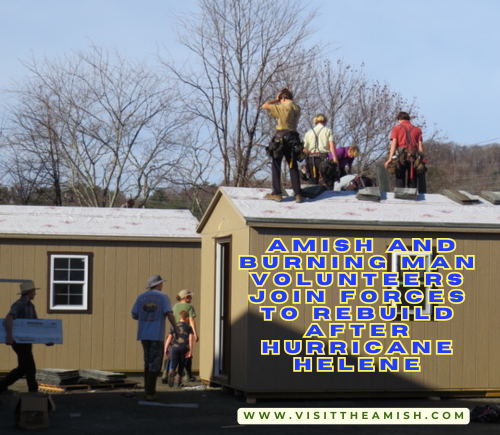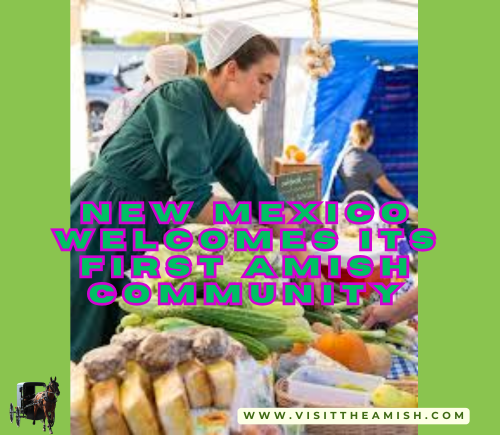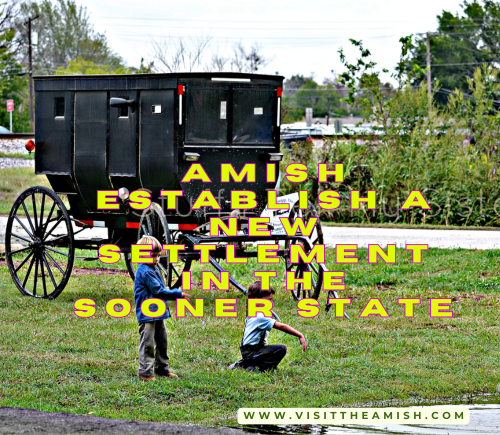Amish Frontier: New Communities Bloom Along the Ohio River
In recent years, a quiet transformation has been taking place along the Ohio River. Washington, Adams, Pike, Vinton, and Belmont Counties have become home to new Amish settlements, adding a unique dimension to the cultural landscape of southeastern Ohio. These emerging communities represent the latest chapter in the ongoing expansion of Amish populations across the Buckeye State.
Ohio has long been a stronghold for Amish communities, boasting the second-largest Amish population in the United States. With over 80,000 Amish residents spread across nearly 700 church districts, Ohio’s Amish presence is both substantial and diverse[9]. However, the establishment of new settlements in these river counties marks a significant development in the Amish demographic landscape.
The growth of Amish communities in Ohio is part of a broader trend. According to data from the Young Center for Anabaptist and Pietist Studies at Elizabethtown College, Ohio’s Amish population has increased by nearly 10,000 people in the past five years alone[1]. This rapid growth has led to the formation of new settlements as established communities become crowded.
Steve Nolt, director of the Young Center, explains the factors behind this expansion: “We have now more Amish people living in more places than they ever did before. This is due to large family sizes and high retention rates. Amish families have between six and seven kids on average, and nearly 90% of those kids join the Amish church as adults”[1].

The formation of new settlements often begins with a small group of families seeking more available land. “A new settlement might start with five, six, seven households,” Nolt elaborates. “And over the course of a number of years, more people may join them”[1].
In Washington County, local resident Sarah Thompson has observed the gradual influx of Amish families. “It started with just a couple of buggies on the road,” she recalls. “Now, it’s not uncommon to see Amish-run produce stands and workshops popping up. It’s bringing a whole new character to our area.”
The Adams County settlement has been particularly noteworthy. John Miller, a local real estate agent, notes the impact on the housing market: “We’ve seen increased interest in properties with larger acreage. The Amish families are looking for land that can support small-scale farming and horse pastures. It’s changing the dynamics of our rural areas.”
Pike County has also witnessed the establishment of a new Amish community. Local shopkeeper Mike Davis has noticed changes in his customer base: “We’ve had to adjust our inventory to include more bulk goods and traditional materials. It’s been a learning experience, but it’s also brought new life to our small town.”
In Vinton County, the arrival of Amish settlers has been met with curiosity and welcome. County Commissioner Lisa Owens comments, “The Amish bring with them a strong work ethic and traditional values. We’re seeing new small businesses emerge, from furniture making to baked goods. It’s contributing to our local economy in unexpected ways.”
Belmont County’s new Amish settlement has sparked interest in cultural exchange. Local teacher Emily Roberts has incorporated lessons about Amish culture into her curriculum: “It’s important for our students to understand and respect the diversity in our community. The Amish presence offers a unique opportunity for learning about different ways of life.”
The integration of these new Amish communities hasn’t been without challenges. As in other areas with Amish populations, concerns about road safety have arisen. “We’ve had to adapt to sharing the roads with horse-drawn buggies,” explains Sheriff Tom Johnson of Adams County. “We’ve increased signage and public awareness campaigns to ensure everyone’s safety.”
The environmental impact of these new settlements is also a topic of discussion. Dr. Laura Chen, an environmental scientist at Ohio University, notes: “The Amish typically practice more traditional, low-impact farming methods. This could have positive effects on soil conservation and biodiversity in the areas where they settle.”

Economic opportunities have emerged alongside the new settlements. In Washington County, local businessman Robert Simmons has seen an uptick in tourism: “People are fascinated by Amish culture. We’re seeing more visitors interested in experiencing the simple life, even if just for a day. It’s opening up new avenues for rural tourism.”
The growth of these new communities reflects a larger trend in Amish expansion across Ohio. The state has added about 170 new church districts in the past decade, more than any other state[1]. This growth is reshaping the cultural and economic landscape of rural Ohio.
As these settlements establish themselves, they’re also adapting to the unique characteristics of their new homes. The Ohio River Valley presents different agricultural challenges compared to traditional Amish strongholds in central Ohio. Local farmer Jim Thompson observes, “The Amish are known for their agricultural skills, but they’re having to adapt to our soil and climate. It’s interesting to see how they’re blending their traditional methods with local knowledge.”
The influx of Amish families has also impacted local schools. While Amish children typically attend their own schools, the presence of these new communities has led to increased cultural awareness programs in public schools. Sarah Miller, a principal in Pike County, shares, “We’ve introduced units on cultural diversity, focusing on the Amish and other groups in our area. It’s broadening our students’ perspectives.”
Local governments are also adapting to the needs of their new residents. County Commissioner Mark Davis of Belmont County explains, “We’ve had to consider things like zoning for small-scale manufacturing and how to accommodate horse-and-buggy traffic. It’s pushing us to think creatively about rural development.”
The economic impact of these new settlements extends beyond agriculture and tourism. Amish-run businesses, particularly in woodworking and crafts, are becoming part of the local economy. Lisa Johnson, director of the Adams County Chamber of Commerce, notes, “We’re seeing a revival of traditional crafts and skills. It’s creating a niche market that’s attracting customers from outside the area.”
As these communities grow, they’re also facing the challenge of maintaining their traditional way of life in a modern world. Elder Jacob Yoder of the Washington County settlement reflects, “Our goal is to live simply and according to our faith. We’re grateful for the welcome we’ve received, but we also need to be vigilant in preserving our values and practices.”
The arrival of Amish communities in these counties is part of a larger demographic shift in rural Ohio. As some areas face population decline, the Amish represent a growing, youthful population. Dr. Michael Brown, a demographer at Ohio State University, explains, “The Amish population doubles about every 20 years. This growth is breathing new life into some rural areas that have been struggling with aging populations and outmigration.”

Looking to the future, it seems likely that these new settlements will continue to grow and shape their adopted communities. As Ohio’s Amish population expands, these river counties may become important centers of Amish life, much like Holmes and Geauga Counties are today.
The story of these new Amish settlements along the Ohio River is one of adaptation, growth, and cultural exchange. As horse-drawn buggies become a more common sight on the roads of Washington, Adams, Pike, Vinton, and Belmont Counties, they serve as a reminder of the diverse tapestry that makes up rural Ohio. The challenges and opportunities presented by this expansion will likely continue to unfold in the years to come, shaping the future of these communities and the state as a whole.
Citations:
[1] https://www.statenews.org/section/the-ohio-newsroom/2024-05-28/your-new-neighbors-may-drive-a-buggy-ohios-amish-population-is-growing
[2] https://ohiosamishcountry.com/articles/the-changing-face-of-the-amish
[3] https://en.wikipedia.org/wiki/Ohio_Amish_Country
[4] https://news.osu.edu/estimate-a-new-amish-community-is-founded-every-35-weeks-in-us/
[5] https://groups.etown.edu/amishstudies/twelve-largest-settlements-2024/
[6] https://wiki.wcpl.info/w/Amish
[7] https://www.amish365.com/preble-county-eaton-new-paris-ohio-amish-settlement/
[8] https://www.reddit.com/r/Ohio/comments/1d2yk7l/amish_growth_in_ohio/
[9] https://amishamerica.com/ohio-amish/



![The Amish volunteers also brought and left behind 20 propane tanks, numerous tools, and five pallets of fire department supplies, including hoses and axes. These additional resources will be first given to the Meat Camp Fire Department and then distributed to other areas in need[1].](https://i0.wp.com/visittheamish.com/wp-content/uploads/2024/12/image-154.png?resize=640%2C374&ssl=1)
![The Amish volunteers also brought and left behind 20 propane tanks, numerous tools, and five pallets of fire department supplies, including hoses and axes. These additional resources will be first given to the Meat Camp Fire Department and then distributed to other areas in need[1].](https://i0.wp.com/visittheamish.com/wp-content/uploads/2024/12/image-152.png?resize=640%2C353&ssl=1)








